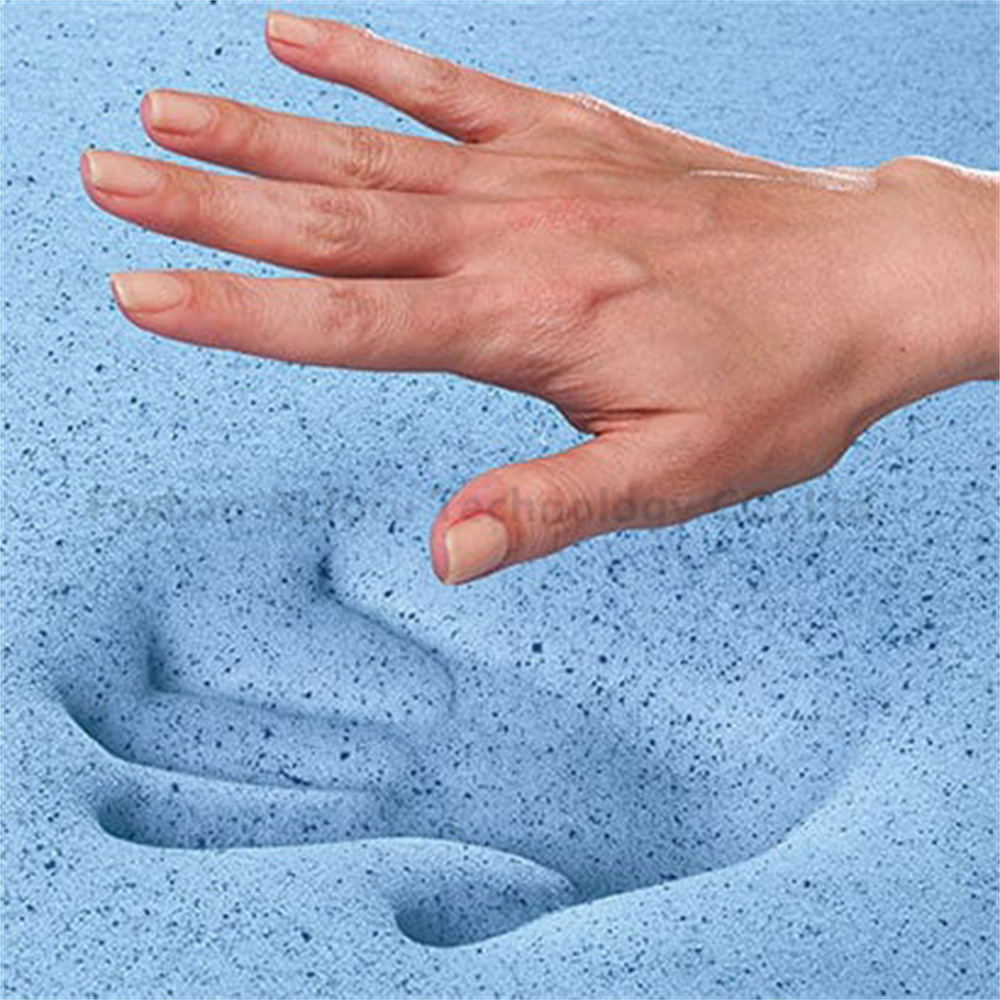Material Characteristics
1.Temperature Sensitivity: The foam responds to the body temperature, gradually becoming soft while absorbing the pressure and adjusting the body to a comfortable posture. The parts not in contact with body temperature maintain sufficient support. An easy way to identify temperature-sensitive products is to place them in the refrigerator for a few minutes and observe that they become hard. Alternatively, removing the product cover, placing your hand on top without applying pressure, allows you to feel a sinking sensation, indicating temperature sensitivity.
2.Viscoelastic Properties: Refers to the foam product compressing under pressure without exhibiting strong rebound (like clay) and gradually recovering to its original shape after the pressure is removed (similar to a spring). Commercially, “slow rebound foam” is also referred to as “zero-pressure foam,” implying a sensation of floating on water or clouds without skin compression. The slow rebound material adjusts irregularly shaped compression to a balanced state, providing both slow deformation adaptation to the pressed object and uniform support. When memory foam evenly distributes pressure, it can reduce the overall pressure to below 36mmHg, creating a sensation of improved blood circulation and reduced pressure.
Material Features
1.Shock Absorption: The foam absorbs impact force, creating a sensation of floating on water or clouds when lying on it, without feeling skin compression. It is also known as zero pressure. Regular pillows may compress the ears, but using memory foam pillows eliminates this issue.
2.Ergonomic Design: The foam is designed according to ergonomics, with memory deformation and automatic shaping ability to fix the head, reduce the risk of a stiff neck. The automatic shaping ability appropriately fills shoulder gaps, preventing common issues of wind leakage around the shoulders and effectively preventing neck problems.
3.Antimicrobial and Mite-Resistant: The foam inhibits mold growth, eliminating the stimulating odor produced by mold reproduction. In the presence of sweat or saliva, these features become more prominent.
4.Breathability and Moisture Absorption: The interconnected cells provide excellent moisture absorption and breathability.
Material Functions
Pressure Relief: Clinically recognized pattern: zero-pressure point – effective blood circulation – deep sleep. According to a study from the University of Chicago Medical Research Center, regular foam pillows and mattresses exert pressure on the body, with pressure on the hips at 80 mmHg, heels at 60 mmHg, thighs at 45 mmHg, calves at 45 mmHg, back at 80 mmHg, and head at 32 mmHg. These pressures exceed the safety threshold of 35 mmHg in supporting areas with pressure, hindering blood circulation in the neck area and potentially causing organ damage over time. Memory foam provides balanced support to every part of the body, preventing pressure-related issues.
Space zero-pressure memory foam contains temperature-sensitive memory particles that adapt to body temperature and pressure, offering a completely different pressure range for body contact areas. The pressures are approximately 25 mmHg for the hips, 15 mmHg for the ankles, 15 mmHg for the thighs, and 23 mmHg for the back, while pressures in other areas are below 12 mmHg. This results in an average floating of the entire body weight, reducing pressure on the spine, muscles, and microvessels by 40-80%, approaching a zero-pressure state. This provides uniform, real support, ensuring that areas in contact with the body remain pressure-free for extended periods, guaranteeing smooth microcirculation and a natural curvature of the spine without fatigue or soreness.


